
Karate
The karate we know was formed in Okinawa in the second half of the 19th century. In Japan at that time, a reform was carried out that deprived the samurai of their privileges. They had to engage in agriculture, crafts, and trade. They also had to face the hatred of the lower classes, who had been dominated for a long time. The impoverished samurai of Okinawa could not practice martial arts as before. They had neither the funds nor the time for this. But they were well acquainted with the experience of the family wushu styles of mainland China and used it.
Chinese family styles were based on the learning and repetition of a relatively small number of self-defense techniques. united into complexes. Such complexes are easy to practice at any time and anywhere. For example, in the morning before working around your house, or returning from the field in the evening. Such complexes were passed down from father or grandfather to son or grandson, like cheese recipes or agricultural skills. Therefore, such styles were practiced by artisans, traders and peasants who did not have time for long training and did not have regular partners to practice techniques. In China itself, due to the widespread use of firearms, these styles were almost forgotten in the late 19th century. However, in Okinawa they got a second life.
Okinawan masters from among samurai deprived of their privileges studied complexes of Chinese styles and, using their rich combat experience, improved them. The movements of the complexes called kata became more natural, and the techniques became simpler and more effective at the same time.
Many karate masters practiced only one or a few kata. But the scarcity of the technical arsenal was compensated by the method of accumulating internal energy. And it accumulates if it is not wasted outside. Two methods were used to conserve energy. The first was to focus on the area in the lower abdomen called the hara or tanden. By collecting attention in the center of his body, a person does not waste attention and energy in the outside world and it begins to accumulate. The same method is used in the internal styles of Wushu and in the Romanov system.
The second method of preserving internal energy, oddly enough for a martial art, was humility. It was expressed in respect for parents, elders, commanders, superiors and even opponents. The legends of the masters are rich in stories of their displays of humility. The ability to avoid combat was extolled as the highest virtue. Of course, beginning karatekas never considered these instructions to be directly related to the fight. But if humility and adherence to etiquette helps to accumulate internal energy without wasting it externally, then this can be decisive at a decisive moment.
Heian Shodan
Each kata in the Heian series includes defense against one type of attack or another. Heian Shodan — protection from blows. However, it is worth noting that this kata only uses abductor blocks, which are often considered old-fashioned and impractical amplitude swings.
All techniques should be tested with a partner, so that when performing a single complex you can have a good idea of the forces that arise. But at the same time, part of the attention should always be kept in the lower abdomen. At first this is difficult to achieve, but then the proportion of attention concentrated in the tanden should increase.
Description kata
1
Bow, take a neutral stance and concentrate on the tanden. Imagine your opponent punching you in the stomach with your right fist. Rotate to the left, deflecting the punch with your right hand while lifting your left.
2
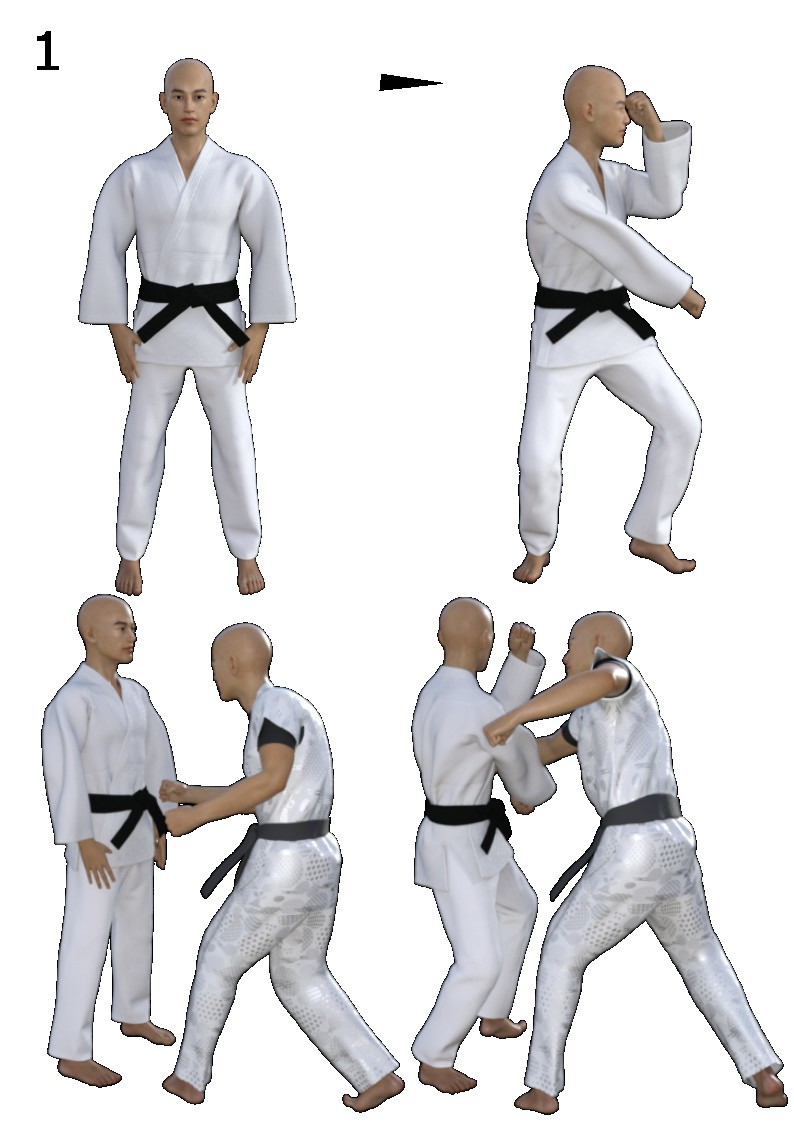
Complete the step to the right and strike your opponent’s punching arm with your left hand, aiming to throw him off balance.

3
Start taking a big step forward with your right foot. Imagine that you are pushing forcefully with your forearm into the chest of an imaginary opponent.
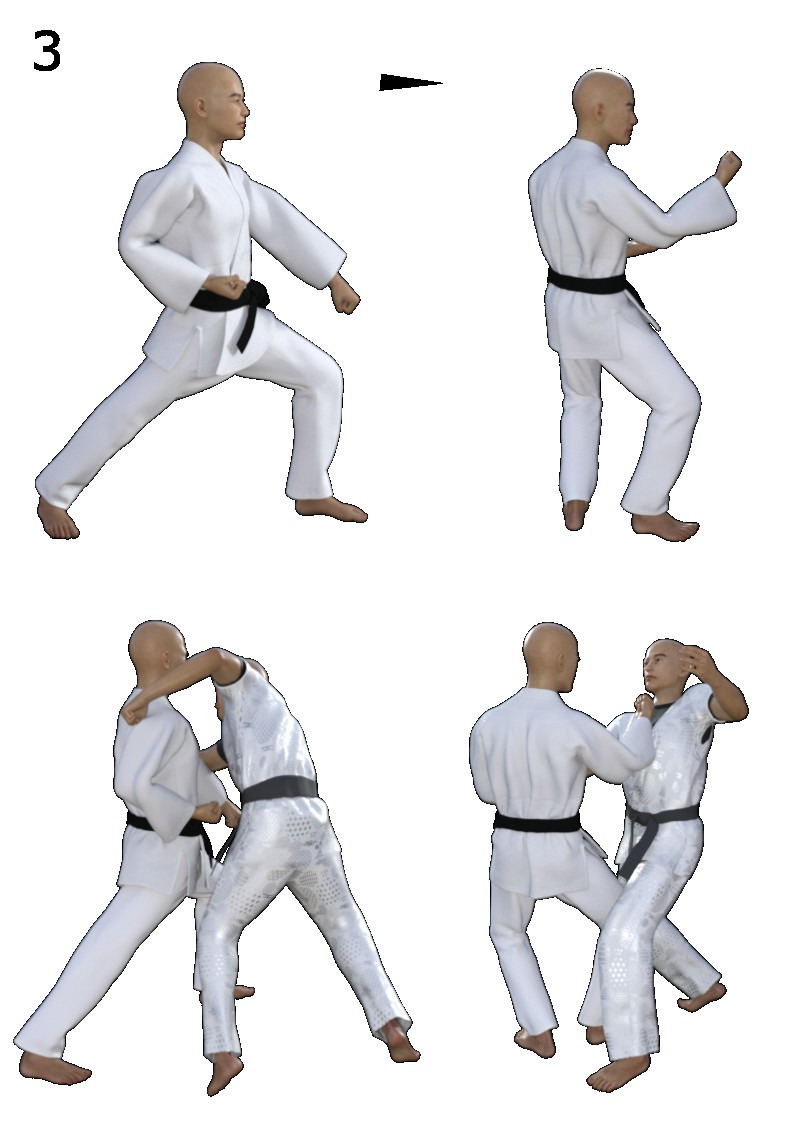
4
As the opponent leans back, quickly rotate your forearm and push your fist into the opponent’s neck/chin. Complete the step with your right foot. This is a throw.
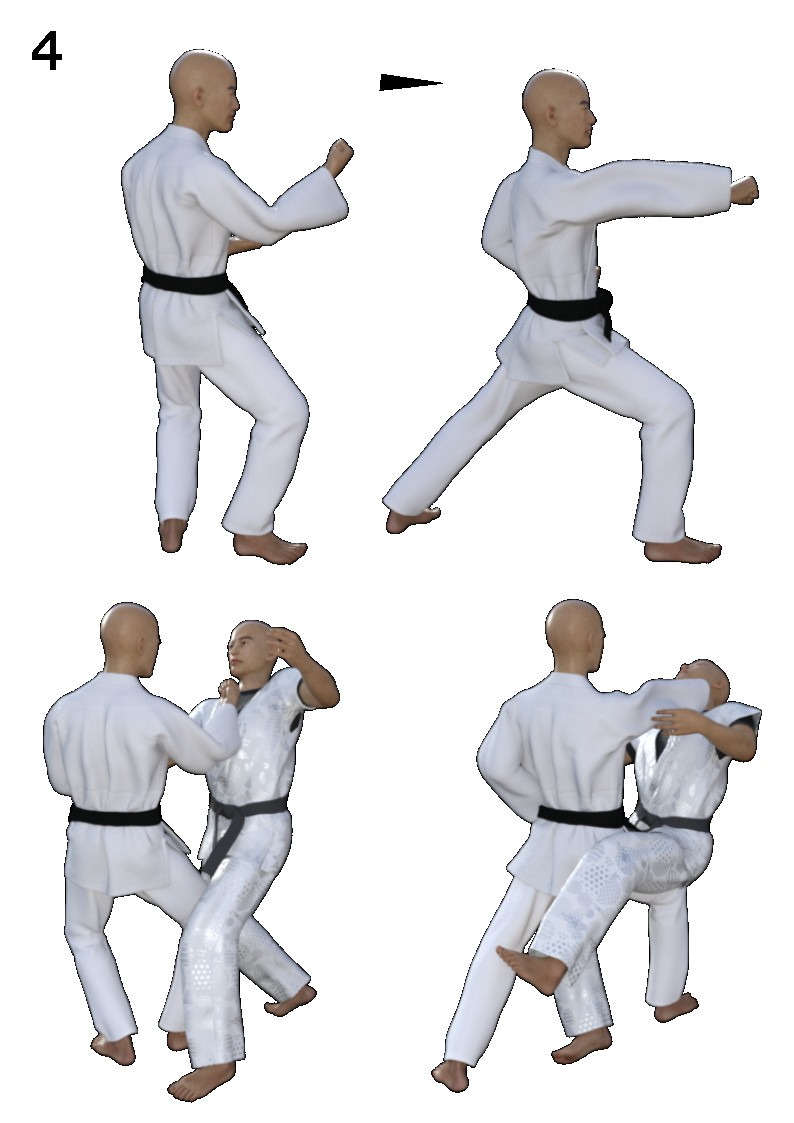
5
Now imagine another opponent punching your stomach with his left fist. Step back and turn to the right, deflecting the blow with your left forearm.
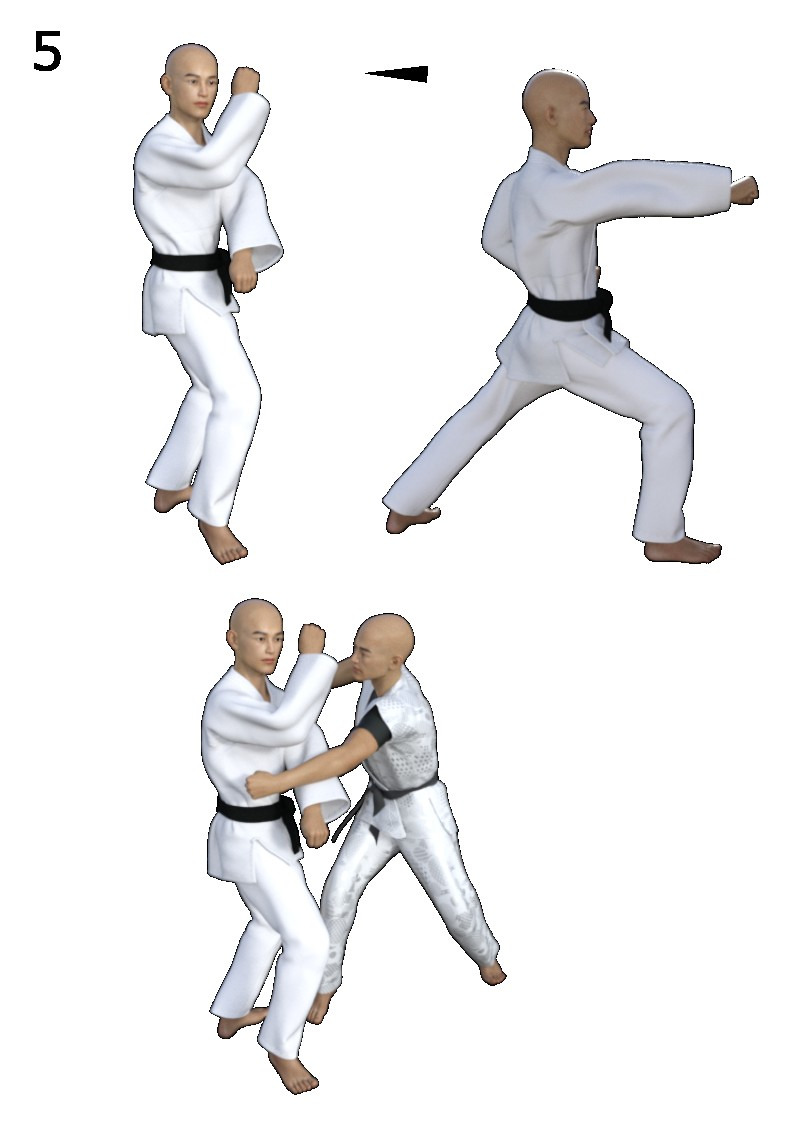
6
Complete the turn and strike your opponent’s left arm with your right hand to throw him off balance. When someone else or the same opponent throws a kick, step back and deflect the kick with your right hand.

7
Continue the circular motion with your arm and throw your opponent off balance.
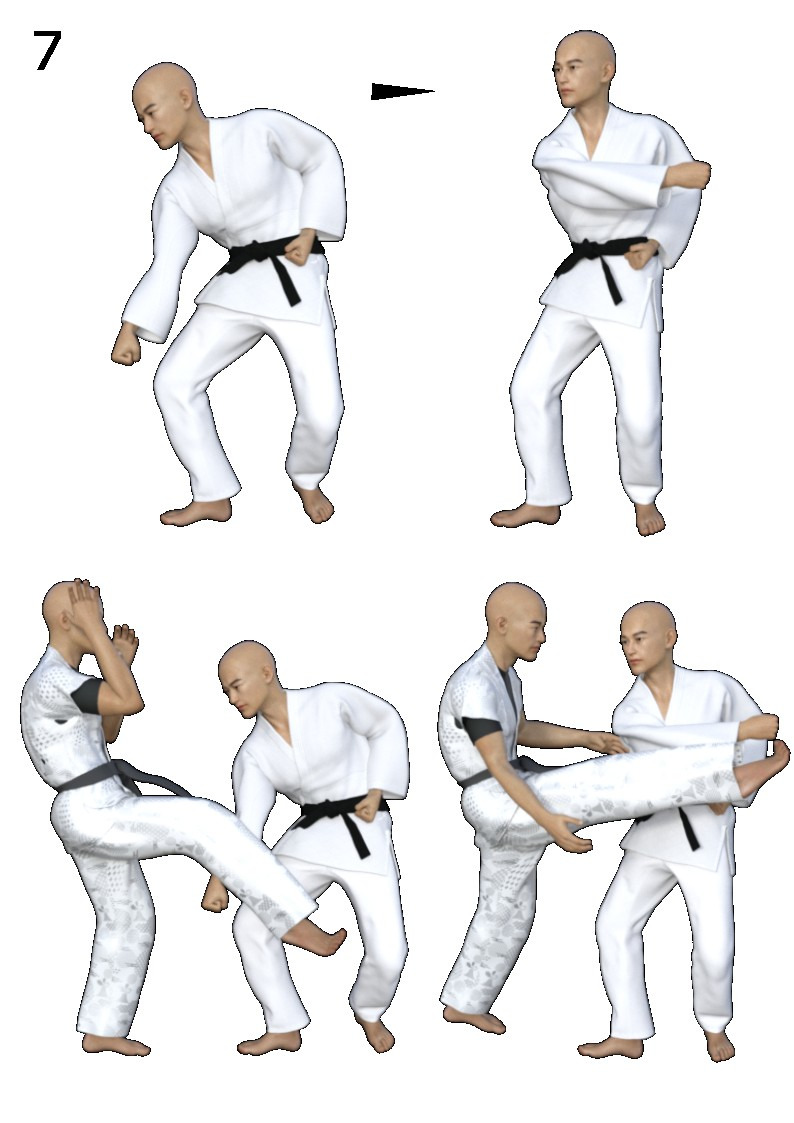
8
Continue the circular motion with your hand and strike/push your imaginary opponent’s forehead. Keep your attention on the tanden.
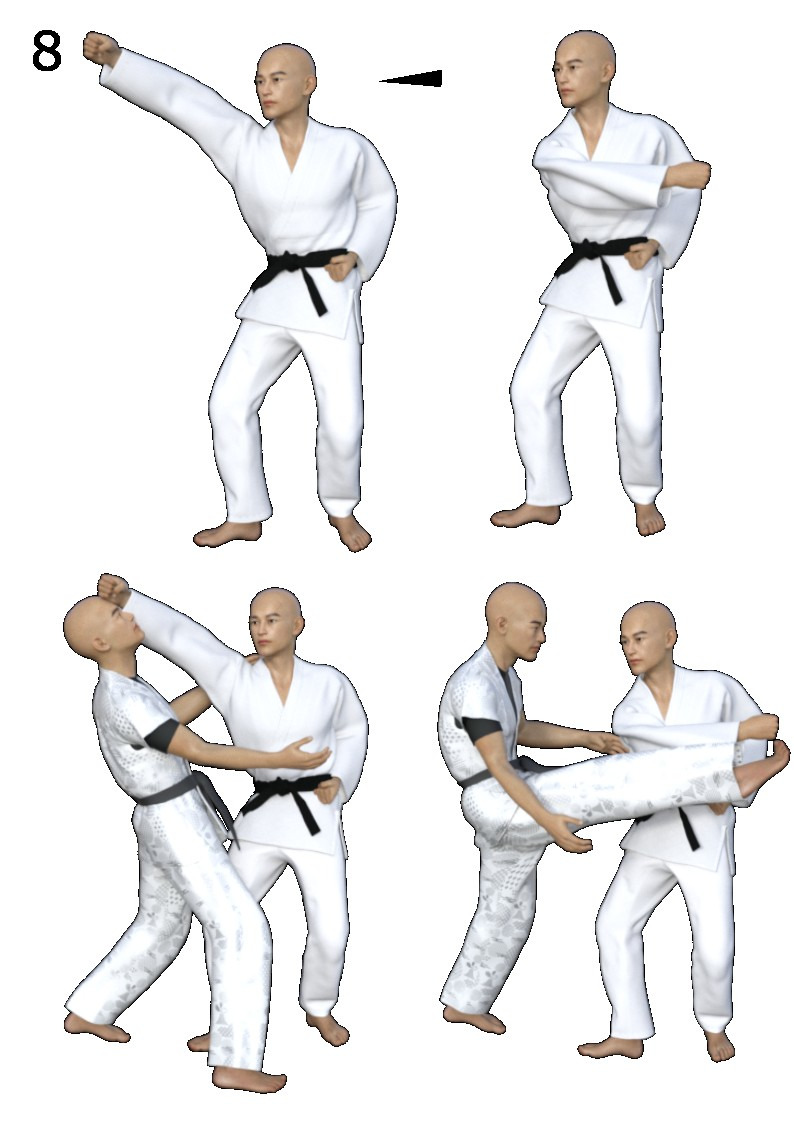
9
Begin to take a large step forward with your left foot and push your opponent hard into the chest with your forearm or the back of your fist.
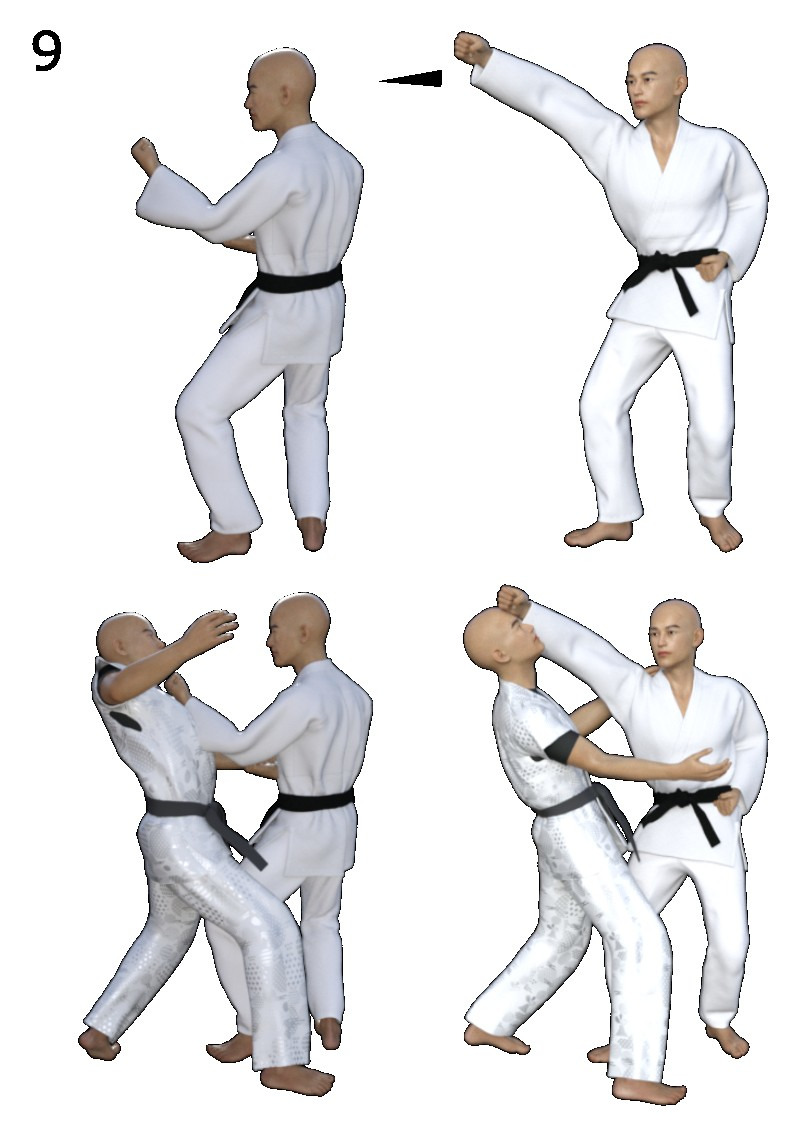
10
Finish the step with your left foot, reverse your fist and push it into your opponent’s neck/chin. In old Chinese styles, this technique, consisting of a thrust to the chest followed by a thrust to the chin, is called the «rotating fist.»
Бесплатный фрагмент закончился.
Купите книгу, чтобы продолжить чтение.
